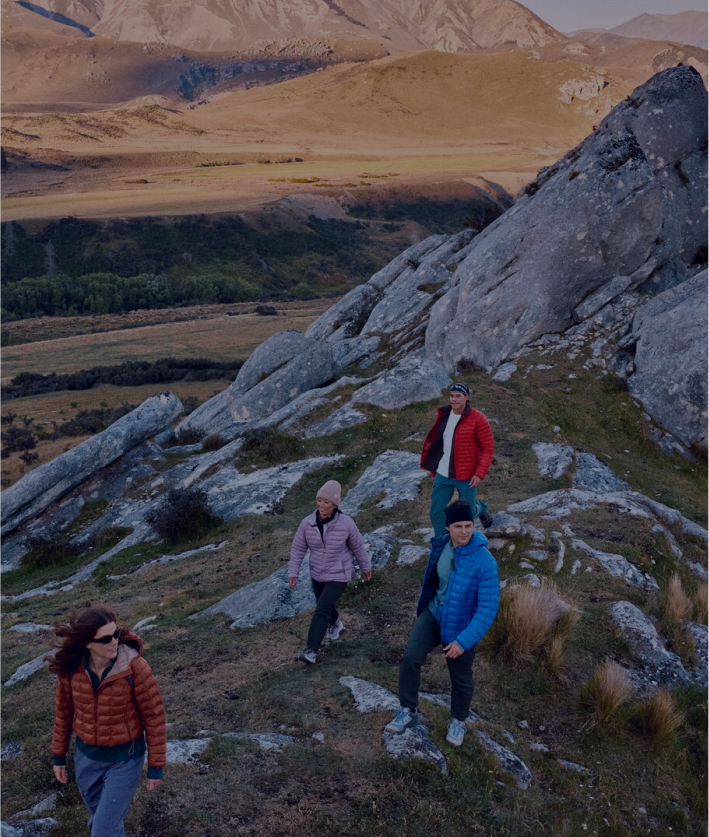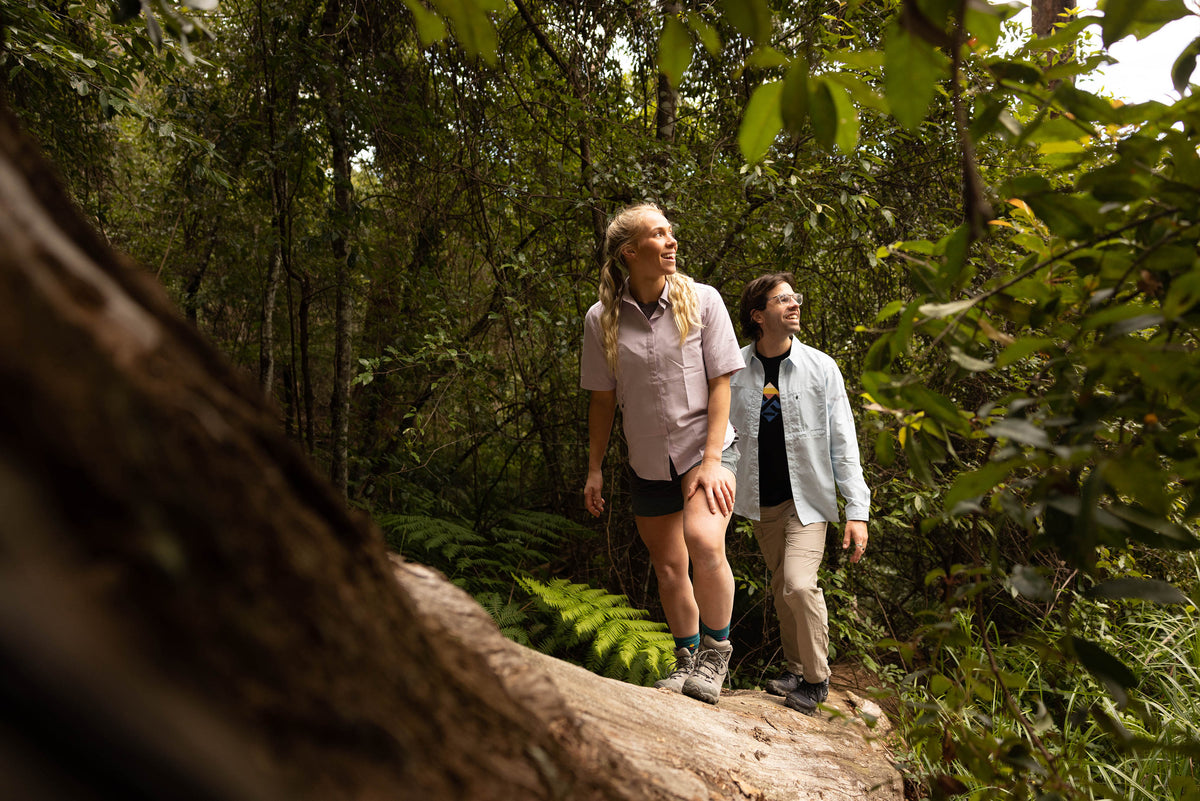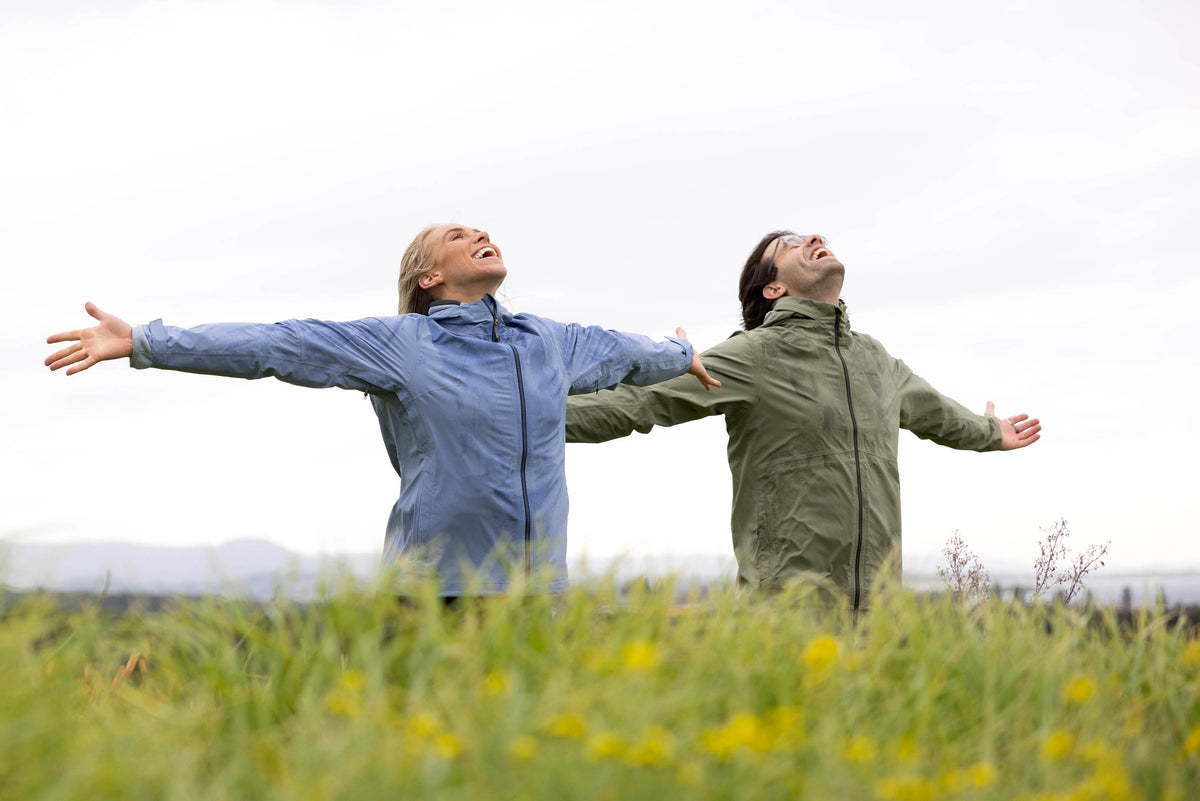The sun is shining, days are longer, and just around the bend lies a secluded waterhole calling your name. It’s the perfect season to lace up your boots and hit the trails for a summer hike. But before you dive into the great outdoors, let’s make sure you’ve got the basics sorted to keep cool, comfy, and safe.
Materials and technology: what to look for
Before we jump into clothing must-haves, let’s talk tech! These fabric features can make all the difference on a hot hike:
-
Synthetics: Lightweight, breathable, quick-drying, and durable—nylon and polyester are hiking heroes when you’re working up a sweat.
-
Merino wool: Don’t let the “wool” scare you! This natural temperature regulator keeps you cool in the heat. It’s versatile, soft, and perfect for year-round hiking. Learn more about Merino wool.
-
Moisture-wicking: Say goodbye to sticky skin—this tech helps move sweat away from your body so you stay dry and fresh.
-
Odour control: Look out for Polygiene or driMOTION labels. Lightweight synthetic hiking gear can struggle with odour, so odour-fighting tech is a game-changer.
-
UPF 50+: Beat the UV rays with clothing that gives ultimate sun protection. UV-blocking clothes are a must for sunny trails.
-
Ventilation panels: Hidden mesh panels that unzip for airflow? Yes, please. Stay cool and breezy on the hottest days.
Safety tips for hot-weather hikes
1. A Breathable Shirt
A breathable long sleeve top is your best bet on high-UV days, protecting your skin while keeping you cool.
- Merino tops: Soft, breathable, and a natural temperature regulator. Shop Merino.
- SUN Stopper range: Lightweight with UPF 50+ protection, excellent moisture management, and quick-drying fabric—plus a built-in hood for extra sun coverage. Shop Sunstopper.
- UPF range: Perfect for summer hikes with options for long and short sleeves. All items offer UPF 50+ protection. Learn more about UPF clothing.
2. Hiking shorts or pants
Let’s talk bottoms!
-
Hiking shorts: Lightweight, moisture-wicking, and quick to dry—ideal for easy, breezy hikes. For mixed running and hiking, go for shorts with a mesh inner like driMOTION shorts. Shop shorts.
-
Long pants: A solid choice for sun protection and trails where prickly plants are lurking. Perfect for those who burn easily or face brush-heavy paths.
3. Breathable, seamless socks
Stay blister-free with temperature-regulating Merino wool socks. Cotton is a no-go—it traps moisture. Seamless options are more comfortable if you’re hiking multiple days or have sensitive feet.
4. A wide-brimmed hat
Protect your face and neck with a wide-brimmed hat. Look for ones with UPF protection and ventilation for extra coolness. Don’t forget sunscreen for those spots a cap can’t cover!
5. A backpack with a hiking harness
Choose a hiking backpack with a harness that promotes air circulation between you and your pack. For day hikes, a pack in the 25–30L range is just right.
Must-have hiking accessories
- Water bladder: At least 2L capacity—hydration is your best friend! Shop water bladders
- Sunscreen: Minimum UPF 50 rating, applied and reapplied throughout your hike.
- Sunglasses: Polarised lenses protect your eyes from UVA, UVB, and UVC rays.
- Electrolytes: Hot days mean sweat! Bring oral rehydration solutions to replenish lost electrolytes.
- First-aid kit: Accidents happen—be prepared.
- Walking poles: Save energy and reduce joint strain with these trusty tools.
- Emergency rain jacket: Summer hikes can mean unpredictable weather. Always pack a lightweight rain jacket.
Safety tips for hot-weather hikes
- Time it right: Avoid the midday heat—early mornings and late afternoons are ideal. Bonus: fewer crowds!
- Hydrate: A rule of thumb: 500ml per hour per person. Adjust based on conditions and bring extra water, just in case.
- Listen to your body: Dizzy? Nauseous? Overheated? Stop and rest in the shade, hydrate, eat, and recover before continuing.
- Pick a smart route: Stick to shaded trails with resting spots if you’re easing back into hiking. Trails with water access? Even better.
- Take breaks: Hiking isn’t a race. Pause to enjoy the view, stretch your legs, and cool down along the way.
With a little preparation, summer hikes can be the stuff of cherished memories—cool dips, warm sun, and a trail full of possibilities. Happy hiking!













